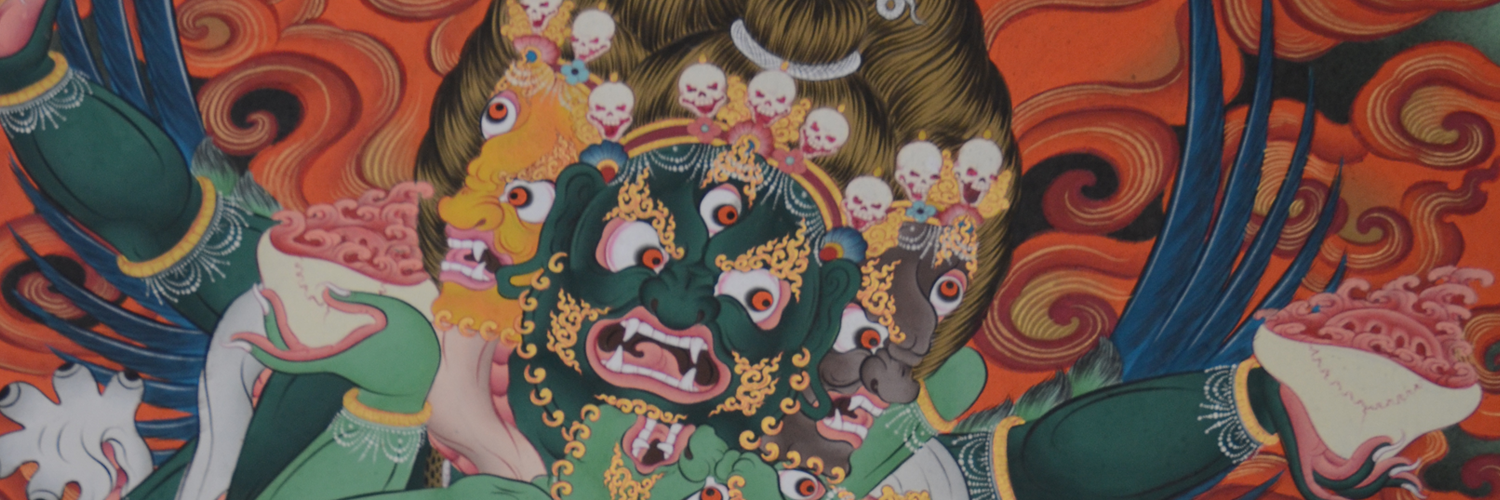Like the other Buddhist tribes and communities of the Trans-Himalayan region, the Monpa owe a great deal of this artistic heritage to the Tibetans. Like Tibetan paintings, most of the Monpa paintings have a religious theme.It is a belief amongst these communities that the painting images of deities and religious themes is a pious act and earns the artist/painter, merit.
A Thangka, also known as Tangka, or Tanka (Tibetan) is a painting on cloth. The literal translation of the Tibetan word Thangka means ‘recorded message’. Amongst all the Arts and Crafts in Tawang, painting occupies a very special position. Not only is it essential for designing, decorating and finishing homes and personal objects, but it is also a highly developed and important mode of religious expression. It is a medium through which the Buddhist philosophy can be explained.
The Thangka is not a flat creation like an oil painting or an acrylic painting but consists of a painted picture panel which is thereafter mounted on a silk border/cover. Generally, Thangkas last a very long time and retain much of their luster, but because of their delicate nature, they have to be carefully kept in dry places so that the Moisture does not harm the painting. It is sometimes also called as scroll-painting due to the completed painting being kept and rolled as scrolls. There are many types of Thangkas in terms of their content and design. As highlighted earlier, their subject matter include Buddhas, bodhisattvas, goddesses, wrathful creatures, humans, inanimate objects (stupas), monastic accessories, religious objects, animals, plants, flowers etc.
Thanka painting is a precise art of exact measurements and proportions.To sketch the figures in a thangka the painter needs an exact knowledge of the measurements and proportions of each deity as established by Buddhist iconography and artistic practice.A grid containing these proportions is essential to establish the continuity and correct transmission of the figures.

Thangka Painting
The ideal bodily form of the enlightened beings has to be perfectly oriented in relation to the central axis and each body part has to be perfectly proportioned. Even the slightest mistake affects the accuracy and hence the religious value of the thangka. It requires deep understanding of the symbolism involved to capture the spirit of it. One can easily purchase a good quality Thangka in the local market.

